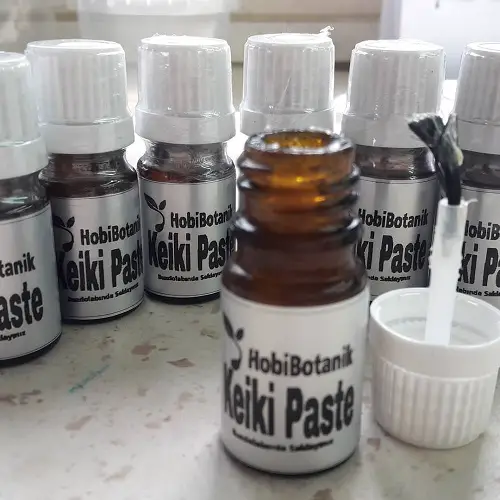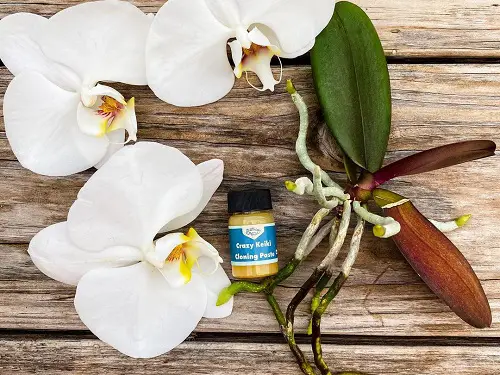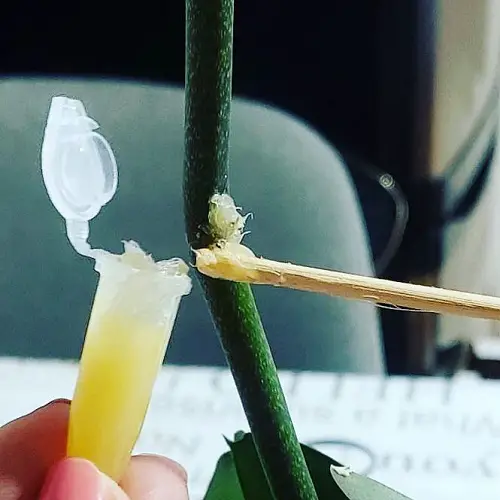Do you know What Keiki Paste is Used For? In this comprehensive post we will tell you about making DIY Keiki Paste Recipe.

Keiki paste is a popular tool used by orchid enthusiasts to propagate new plants from keiki, which are small plantlets that grow on the nodes of orchid stems. If you want to know how to make a DIY Keiki Paste Recipe, then keep on reading.
Check out the 10 Best Homemade DIY Fungicide Recipes for Plants here
Understanding Keiki Paste

Keiki paste, also known as an orchid paste or cloning paste, is a hormone-based substance that stimulates the growth of Keiki in orchid plants. The paste contains plant growth regulators, such as cytokinins and auxins, which encourage the development of new roots and shoots.
Check DIY Dandelion Fertilizer Recipes here
Benefits of Keiki Paste
- Boosts the Chances of Propagation: Keiki paste facilitates the propagation of orchids by promoting the growth of Keiki. This keiki can be separated from the parent plant and potted individually, giving rise to new orchid plants.
- Increased Success Rate: By applying keiki paste to the nodes of orchid stems, you can enhance the chances of keiki formation.
- Time-Efficient: Using keiki paste can significantly shorten the time required for propagation. Rather than waiting for keiki to develop naturally, you can induce their growth with the help of keiki paste, saving months or even years.
Check out 4 Best DIY Potassium Fertilizer Recipes here
DIY Keiki Paste Recipe

Creating a DIY Keiki Paste for orchid plants is possible using a few commonly available ingredients.
Ingredients:
- 1 tablespoon of organic coconut water (which can be found in health food stores or supermarkets)
- 1 teaspoon of organic honey
- 1 teaspoon of organic cinnamon powder
- Small container for mixing
Instructions:
- In the small container, combine the organic coconut water, organic honey, and organic cinnamon powder.
- Mix the ingredients thoroughly until they form a smooth paste.
- Adjust the consistency if needed by adding a bit more coconut water or cinnamon powder. The paste should be thick enough to adhere to the orchid’s nodes or aerial roots.
- Once the paste is ready, apply a small amount to the desired nodes or aerial roots of the orchid plant using a clean brush or cotton swab.
- Reapply the paste every few weeks or as directed, depending on the growth rate of your orchid.
Note: DIY recipes may not have the exact balance or concentration of growth-promoting hormones found in commercially available Keiki Paste. Therefore, the effectiveness may vary. Additionally, it’s always a good idea to test the paste on a small area of the orchid first to ensure it doesn’t cause any adverse reactions.
Check out the Homemade Potassium Fertilizer Recipe here
How to Apply Keiki Paste?

An orchid keiki refers to a young baby orchid plant that develops as an offshoot from the parent orchid plant. The word “keiki” is derived from the Hawaiian language, where it means “baby” or “child.” Keikis are essentially new growths or plantlets that form along the stems, nodes, or aerial roots of an orchid.
- Look for nodes or aerial roots on the orchid plant where you want to encourage keiki growth. Nodes are small bumps along the stem where new growth can occur.
- Take a small amount of your homemade Keiki Paste and apply it directly to the selected nodes or aerial roots using a clean brush or cotton swab. Gently brush or dab the paste onto the surface, ensuring good coverage.
- After applying the paste, it’s important to continue providing proper care for the orchid plant. Maintain the appropriate lighting, temperature, humidity, and watering conditions for your specific orchid species. Regularly check the keiki’s progress to ensure it’s developing well.
- Once the keiki has developed sufficient roots and leaves and it’s independent enough to survive on its own, you may consider separating it from the parent plant. Use sterilized scissors to carefully detach the keiki from the parent plant, ensuring it has an adequate root system to support itself. Plant the keiki in a suitable orchid potting mix or medium and provide appropriate care.


